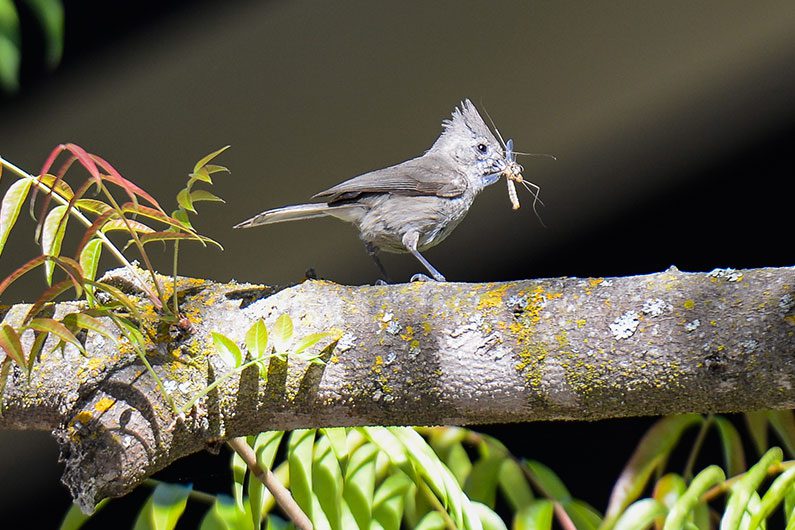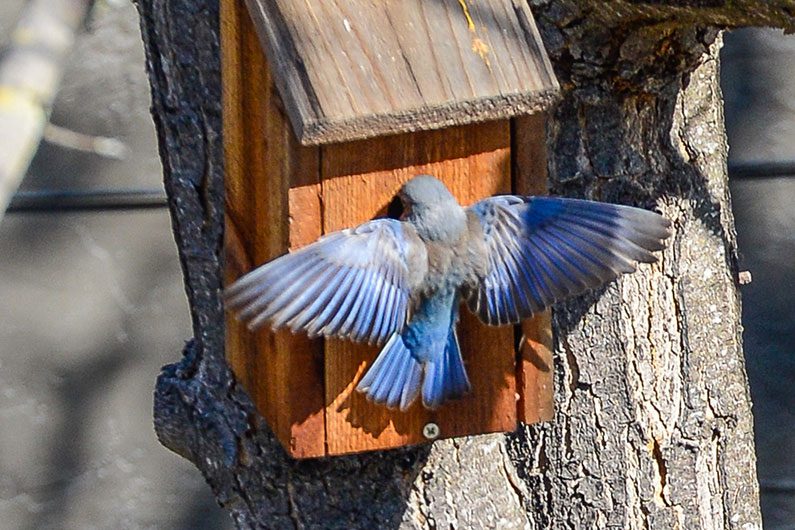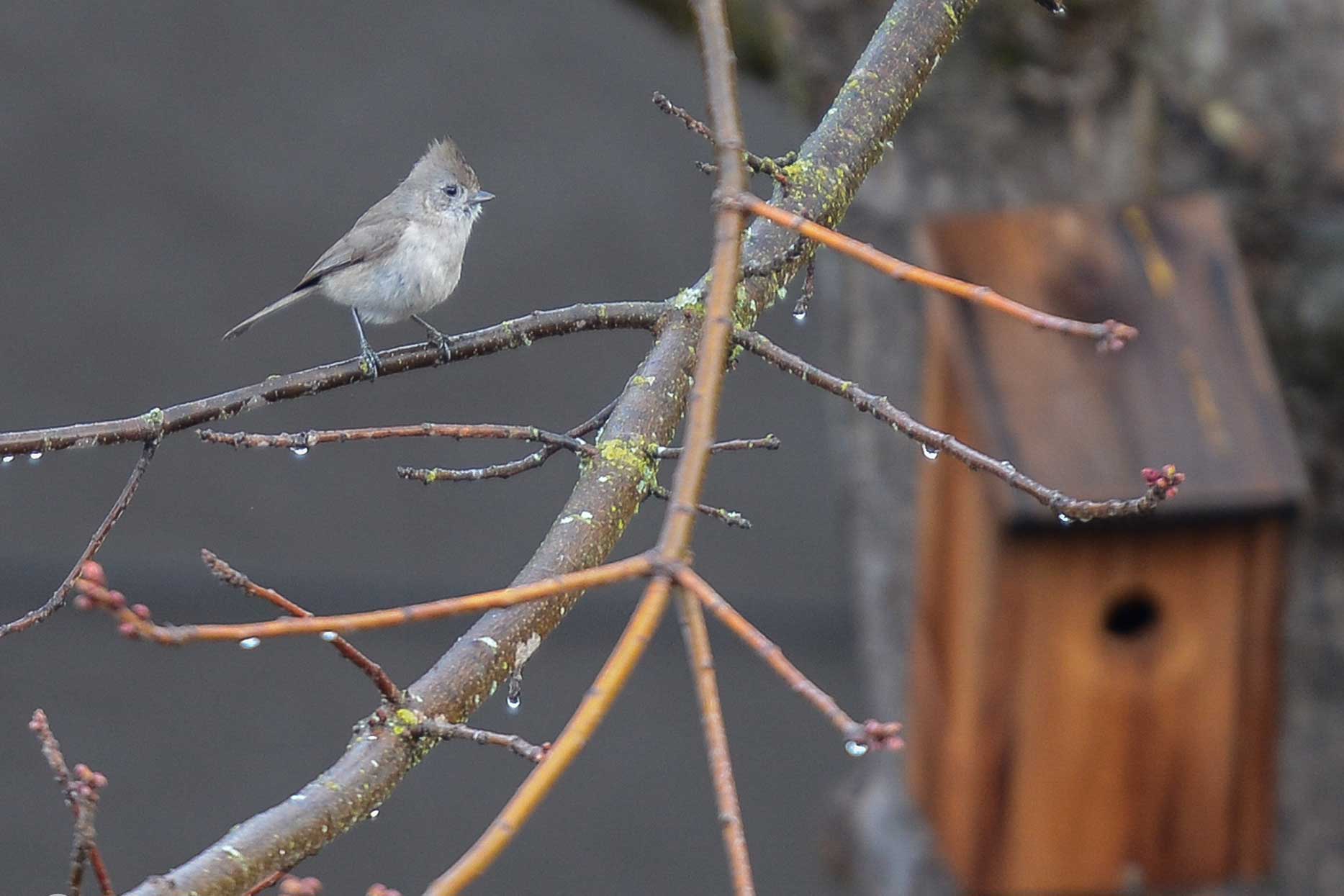Oak Titmice at Home on the Santa Rosa Southeast Greenway
“Peter! Peter! Peter!” The familiar call grabbed my attention, and I jumped up from my desk to investigate. Through our second-floor window, I watched a small gray bird with a perky crest stand tall on a branch and disappear into the nest box I’d installed on a tree trunk two years earlier. For weeks, I’d glimpsed this bird’s mate delivering twigs and tufts of moss to build their nest.

We live next to the Santa Rosa Southeast Greenway, where Oak Titmice forage on acorns, seeds, and insects. The species is in decline throughout their range, mainly due to the loss of oak forest habitat, including nest cavities in trees.
Male and female titmice typically mate for life and look alike, so you might wonder how I knew it was the male calling and the female constructing the nest. Only males make the territorial call I’d heard. Females build the nest and, while sitting on eggs, are fed by the male.
I thought I knew the breeding male’s strident three-to-seven note call. Recently, however, I was tricked by another avian neighbor. After dark, a couple of birds began singing from a nearby tree. Odd, I thought, to hear a titmouse at night. Eventually, I figured out it was not two birds but a single mockingbird who had incorporated a fragment of the titmouse’s Peter! Peter! Peter! into his complex repertoire.
The restoration of the Southeast Greenway to its natural habitat, including replanting native oaks, will support more wildlife and provide extensive access for residents and visitors to a semi-natural corridor from Farmers Lane to spectacular Spring Lake Park. To view other wildlife photo essays or watch a video of the Oak Titmouse pair defending their nest box against a pair of bluebirds, visit my website at Beth Ann Mathews.

By Beth Ann Mathews – a retired marine biologist, Greenway volunteer, and author of a forthcoming (May 2, 2023) book Deep Waters: A Memoir of Loss, Alaska Adventure, and Love Rekindled.

